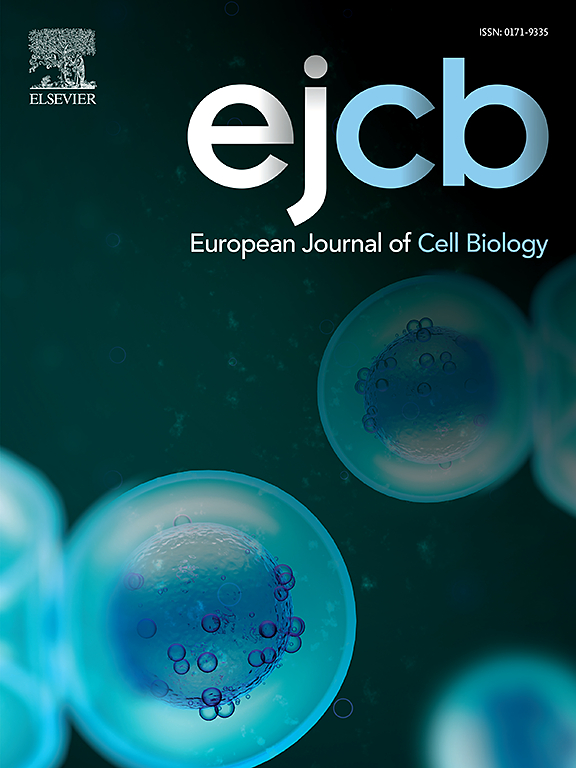dCas9-HDAC8-EGFP fusion enables epigenetic editing of breast cancer cells by H3K9 deacetylation
IF 4.3
3区 生物学
Q2 CELL BIOLOGY
引用次数: 0
Abstract
Epigenetic editing is thriving as a robust tool for manipulating transcriptional regulation and cell fate. Despite its regulatory role in gene downregulation, epigenetic editing with histone deacetylation has been sparsely studied, especially in the context of cancer. In this current study, we have reconstructed a dCas9-HDAC8-EGFP fusion to perform histone deacetylation on the promoter of the ESR1, TERT and CDKN1C genes for the first time in breast cancer cell lines MCF-7 and MDA-MB-231 as well as in HEK293T cells. Our results demonstrated that dCas9-HDAC8-EGFP in combination with appropriate gRNAs were able to downregulate the expression of the ESR1, TERT and CDKN1C genes transcriptionally by specifically depleting the H3K9ac level on the recruitment loci. The addition of histone deacetylase inhibitors was found to neutralize the outcomes of dCas9-HDAC8-EGFP-induced epigenetic editing. Furthermore, we observed a significant downregulation of full length ERα expression in epigenetically edited MCF-7 cells with consequential alteration in cellular response toward estradiol and tamoxifen treatment due to dCas9-HDAC8-EGFP mediated epigenetic editing of the ESR1 gene. Overall, dCas9-HDAC8-EGFP is a novel circuit that enabled downregulation of crucial genes with cellular outcome in breast cancer cells by preferentially inducing H3K9 deacetylation of specific promoter regions.
dCas9-HDAC8-EGFP 融合可通过 H3K9 去乙酰化对乳腺癌细胞进行表观遗传编辑。
表观遗传编辑作为操纵转录调控和细胞命运的有力工具正在蓬勃发展。尽管表观遗传编辑在基因下调中发挥着调控作用,但对组蛋白去乙酰化的研究却很少,尤其是在癌症方面。在本研究中,我们首次在乳腺癌细胞系 MCF-7 和 MDA-MB-231 以及 HEK293T 细胞中重建了 dCas9-HDAC8-EGFP 融合体,对 ESR1、TERT 和 CDKN1C 基因的启动子进行组蛋白去乙酰化。我们的研究结果表明,dCas9-HDAC8-EGFP 与适当的 gRNA 结合使用,能够通过特异性地消耗招募位点上的 H3K9ac 水平,转录下调 ESR1、TERT 和 CDKN1C 基因的表达。加入组蛋白去乙酰化酶抑制剂可中和 dCas9-HDAC8-EGFP 诱导的表观遗传编辑结果。此外,由于 dCas9-HDAC8-EGFP 介导了 ESR1 基因的表观遗传编辑,我们观察到表观遗传编辑的 MCF-7 细胞中 ERα 的全长表达明显下调,细胞对雌二醇和他莫昔芬处理的反应也随之改变。总之,dCas9-HDAC8-EGFP 是一种新型回路,它能通过优先诱导特定启动子区域的 H3K9 去乙酰化来下调乳腺癌细胞中影响细胞结果的关键基因。
本文章由计算机程序翻译,如有差异,请以英文原文为准。
求助全文
约1分钟内获得全文
求助全文
来源期刊

European journal of cell biology
生物-细胞生物学
CiteScore
7.30
自引率
1.50%
发文量
80
审稿时长
38 days
期刊介绍:
The European Journal of Cell Biology, a journal of experimental cell investigation, publishes reviews, original articles and short communications on the structure, function and macromolecular organization of cells and cell components. Contributions focusing on cellular dynamics, motility and differentiation, particularly if related to cellular biochemistry, molecular biology, immunology, neurobiology, and developmental biology are encouraged. Manuscripts describing significant technical advances are also welcome. In addition, papers dealing with biomedical issues of general interest to cell biologists will be published. Contributions addressing cell biological problems in prokaryotes and plants are also welcome.
 求助内容:
求助内容: 应助结果提醒方式:
应助结果提醒方式:


